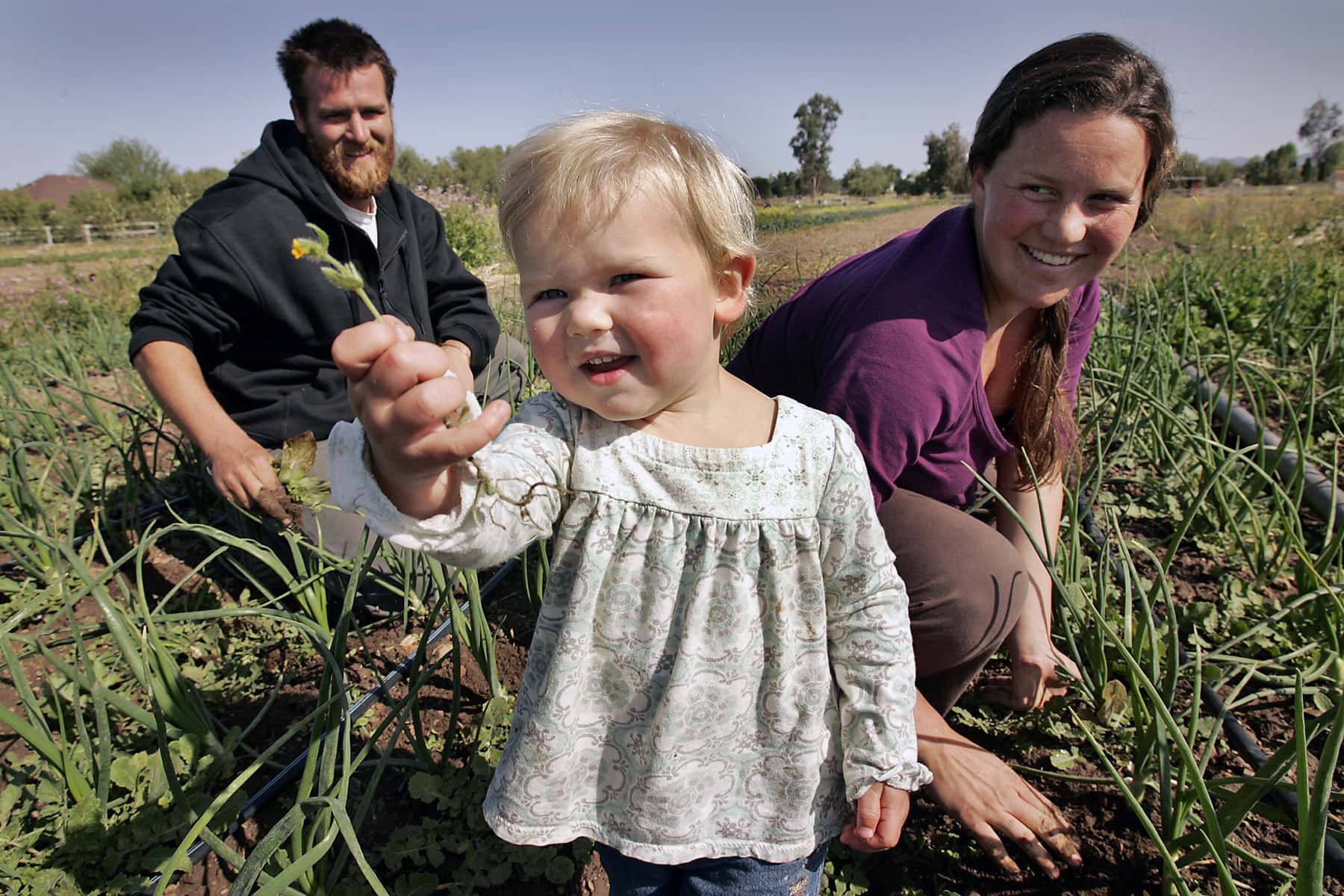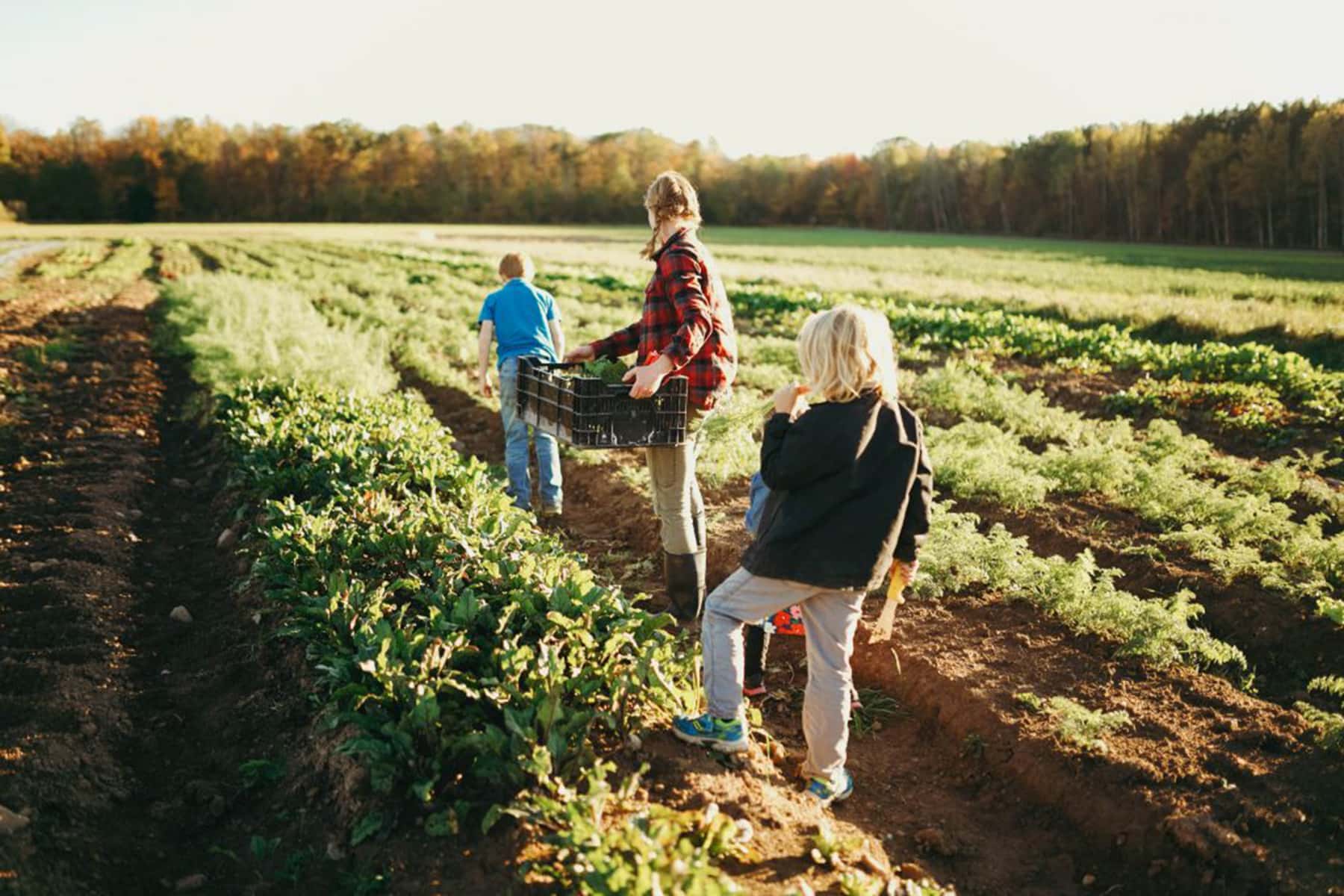
By Shoshanah Inwood, Assistant Professor of Rural Sociology, The Ohio State University; Andrea Rissing, President’s Postdoctoral Scholar in the School of Environment and Natural Resources, The Ohio State University; and Florence Becot, Associate Research Scientist in Rural Sociology, Adjunct Faculty – National Farm Medicine Center, The Ohio State University
Kat Becker feeds hundreds of people with the vegetables she grows on her Wisconsin farm, and she wants to expand. But her ability to grow her business collides with her need for affordable health insurance and child care.
She has had to make difficult choices over the years: keep her farm income low enough so her children can qualify for the state’s public health insurance, or expand the farm and buy expensive private insurance. To look after her three young children, she could hire a cheap but inexperienced babysitter, or spend a significant share of her income on child care and have peace of mind that the kids are safe from dangers on the farm.
“The stable choice for my children to have health insurance is an irrational choice for my farm business,” she said.
We have heard numerous stories like Kat’s in our work as social scientists supporting the next generation of farmers. Through thousands of interviews, surveys and conversations with farmers across the country, we have documented how household expenses like access to health care and child care undercut investments that could increase food production across the United States. As farmers continue to age and retire, the U.S. needs young farmers to take their place. The country has 3.4 million farm operators today, roughly 2% of the American population, and their average age is 58.
The U.S. Department of Agriculture has made concerted efforts to help young and beginning farmers, particularly with access to farmland, credit and marketing skills. But focusing on the technical side of farming misses a fundamental fact about farms: They are inherently social entities, and their success depends upon social infrastructure as much as biophysical or financial infrastructures. Bolstering food systems’ resilience means supporting individuals so they can grow food. Our research indicates that health care and child care are two crucial ingredients for a successful food system.
Health insurance: What happens when farmers get sick?
Economists find that healthier workers are more productive, adaptable and better able to cope with stress. Farming, meanwhile, is stressful, risky and physical work. Our research found that two-thirds of farmers have a preexisting health condition, and one in three farms has a family member whose health problems make farming difficult. Farmers prioritize having health insurance – over 90% of farmers are covered – yet this number hides details that plague the entire U.S. health care system.
In addition to farming, half of all farm families have at least one adult working an additional full-time job, often primarily to get health insurance coverage. It is an affordable option, but pulls time and energy away from farm work. Farmers in states as diverse as Mississippi, California and Nebraska have shared the lengths they have gone to stay eligible for public health insurance. In extreme cases, farmers have said they kept marriages secret. Often, farmers feel trapped: Too much income can put them over the threshold for public benefits.
Nationwide, 68% of all personal bankruptcies are connected to health and medical expenses. Such personal and financial crises can have long-term consequences for farms. One in two farm families reported that they worried they would have to sell farm assets to pay health expenses. Farmers report that covering health care needs often means working into old age or selling land to the highest bidder. This limits access to farmland, making it even harder for young farmers to get started.
Child care: Who watches the kids?
As parents across the country discovered during the pandemic, productivity can suffer when working from home with children around. Magazine and grocery store advertisements of smiling farmers posing with young children obscure the reality that farm parents are working parents who also must navigate the complex world of child care.
Growing up on a farm has many benefits for children, but farms can also be dangerous. Every day 33 children are seriously injured in agricultural-related incidents, and every three days a child dies on a farm. Child care is rarely discussed in conversations related to farm viability and farm safety, yet it underpins the very foundation of the family farm.
In a national study of farm parents before the pandemic, we found that two-thirds had struggled with the cost, availability and quality of child care. Surveying farm parents during the early months of COVID-19, we found 58% reported that taking care of children became harder during the pandemic – especially for women farmers and those with children under age 6.
Women are one of the fastest-growing groups of farmers, and their role as primary caregivers influences a farm’s success. In our research, women were almost twice as likely as men to report that child care was an important factor in farm decisions, 44% compared to 24% among men.
We also found that the majority of women farmers with child care problems operated small or medium farms and were significantly more likely to sell directly to consumers, such as at farmers markets. These findings have implications for the food system. The Biden administration’s new US$1.8 trillion proposal proposal to support families and women in the workforce includes resources for child care infrastructure. These investments could also deliver much-needed support for American farm families.
Prescription for supporting the next crop of farmers
Over the last 10 years, farm families have told us that public insurance options, making insurance easier for self-employed people to access, universal health insurance, and affordable rural child care would help them grow better food and stronger businesses. These challenges parallel those faced by many Americans. Policymakers can leverage lessons from the social and economic crises triggered by COVID-19 to ensure that all Americans, including those who grow the nation’s food, have access to adequate and affordable health insurance and child care.
The Department of Agriculture announced on April 21, 2021, that it was beginning an effort to “improve and reimagine” the supply chains for food production – including meeting the need of agriculture workers and addressing the needs of mid- to small-size farms. This an opportunity to integrate health insurance and child care as core infrastructure that supports the future of farmers and rural communities, along with the U.S. food supply.
Originally published on The Conversation as Young farmers struggle with child care and health insurance – and that can threaten the future of family farms
Support evidence-based journalism with a tax-deductible donation today, make a contribution to The Conversation.














